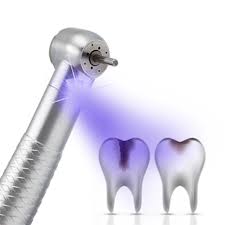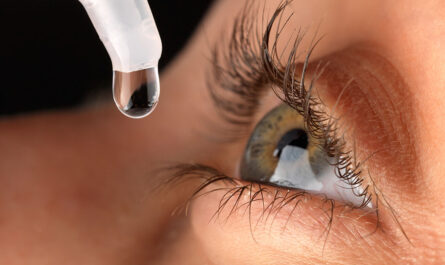Tooth decay or dental caries is one of the most common chronic diseases affecting people worldwide. It occurs when bacteria in the mouth converts sugars into acids that attack the tooth enamel. This can lead to cavities and pain if left untreated. Early detection of dental caries is important to treat it at an early stage and prevent further damage. Traditional dental examination methods rely on visual and tactile inspection which may miss early signs of decay between teeth or below fillings. New dental caries detectors are being developed that use advanced technologies to detect even microscopic signs of demineralization before a cavity forms. These detectors have the potential to revolutionize how we approach preventing and treating tooth decay.
Laser Fluorescence Detection
One of the most promising dental caries detection methods is laser fluorescence. This technique uses a laser light source to excite natural fluorescent molecules that are present in healthy tooth enamel. As the enamel begins to demineralize due to the onset of decay, there is a drop in fluorescence. Dental caries Detectors like the DIAGNOdent can detect this change and give a numerical reading to indicate if treatment is needed. Studies have found laser fluorescence to be highly accurate in detecting pit and fissure caries as well as early enamel lesions. It has advantages over visual inspection alone as it can detect the “invisible” signs of demineralization not seen with the naked eye. Laser fluorescence is becoming mainstream in dentistry and many dental practices now routinely use this technology for caries detection and assessment of treatment needs.
Infared Thermal Detection
Another advanced method being researched is infrared thermography or thermal imaging to detect dental caries. This technique relies on the fact that areas of demineralization have altered thermal conductivity compared to healthy tooth structure. An infrared camera can map the temperature variations across tooth surfaces and detect “hot spots” that may indicate sub-surface demineralization. Preliminary studies show promise in detecting both occlusal and interproximal caries using this non-invasive method. Further research is exploring ways to standardize readings and develop user-friendly devices for routine dental practice use. Infared thermal detection holds promise as a potential caries detector of the future that does not require direct contact with the tooth.
Digital Radiography and 3D Imaging
While traditional dental radiographs are still useful, 3D imaging using CBCT technology is opening new applications in caries detection. Advanced software allows dentists to visualize caries lesions in multiple planes and assess their full extent not possible on regular 2D x-rays. Some companies are also developing proprietary algorithms to analyze CBCT volumetric data and generate color-coded maps highlighting areas of suspected demineralization. Additionally, digital radiography systems now have features like digital subtraction that can reveal even minute changes in hard tissues over time, aiding early caries diagnosis before cavitation occurs. As 3D imaging becomes more mainstream, its role in caries risk assessment, monitoring lesion progression or regression, and treatment planning will continue expanding in the future of caries detection.
Electrical Conductivity Testing
Changes in the mineral content and structure of demineralized enamel also alter its electrical conductivity properties. Devices utilizing electric current or impedance testing examine how tooth tissues conduct or restrict flow of electrical current. The BioZite System uses bio-impedance spectroscopic analysis to detect and monitor caries activity. It has shown promise in detecting interproximal caries similarly to X-rays. Other companies are also at various stages of developing handheld devices utilizing similar principles. While still investigational, electrical conductivity based caries detectors have potential for future use either as standalone tools or as adjuncts enhancing conventional methods. Their ability to analyze teeth non-destructively and monitor lesions over time also opens avenues for remote caries risk assessment.
Computer-Assisted Methods and Artificial Intelligence
With advancement in computing power and artificial intelligence, new computer-vision based methods for Dental Caries Detectors are emerging. Systems applying machine learning algorithms to digitally analyze intraoral photos or scans for caries signs are in development. One system uses a smartphone camera and an app to capture high resolution images which are then analyzed using deep learning neural networks trained on large dental image datasets. The app provides real-time diagnosis and locates suspect areas for the clinician’s review. With more training data, these AI-assisted systems have potential to eventually match or even surpass human accuracy levels, especially for detecting hidden interproximal lesions. Additionally, computer-aided diagnosis could help speed up examination, increase detection rates and make screenings more objective and standardized.
Lasers, thermal cameras, 3D imaging, biosensors and AI all offer methods to uncover signs of demineralization missed by the naked eye alone. When used adjunctively with clinical examination, they could aid earlier diagnosis, monitor lesion activity and progression more precisely, and help optimize treatment interventions. With continued refinement, some of these novel detection modalities may become mainstream caries diagnostic tools enabling a shift towards personalized, minimal intervention approaches focused on maintaining healthy tooth structure for life. Ultimately, advancing caries detection technology brings us closer to realizing the goal of eradicating this prevalent disease worldwide through early intervention and prevention.
*Note:
1. Source: Coherent Market Insights, Public sources, Desk research
2. We have leveraged AI tools to mine information and compile it




